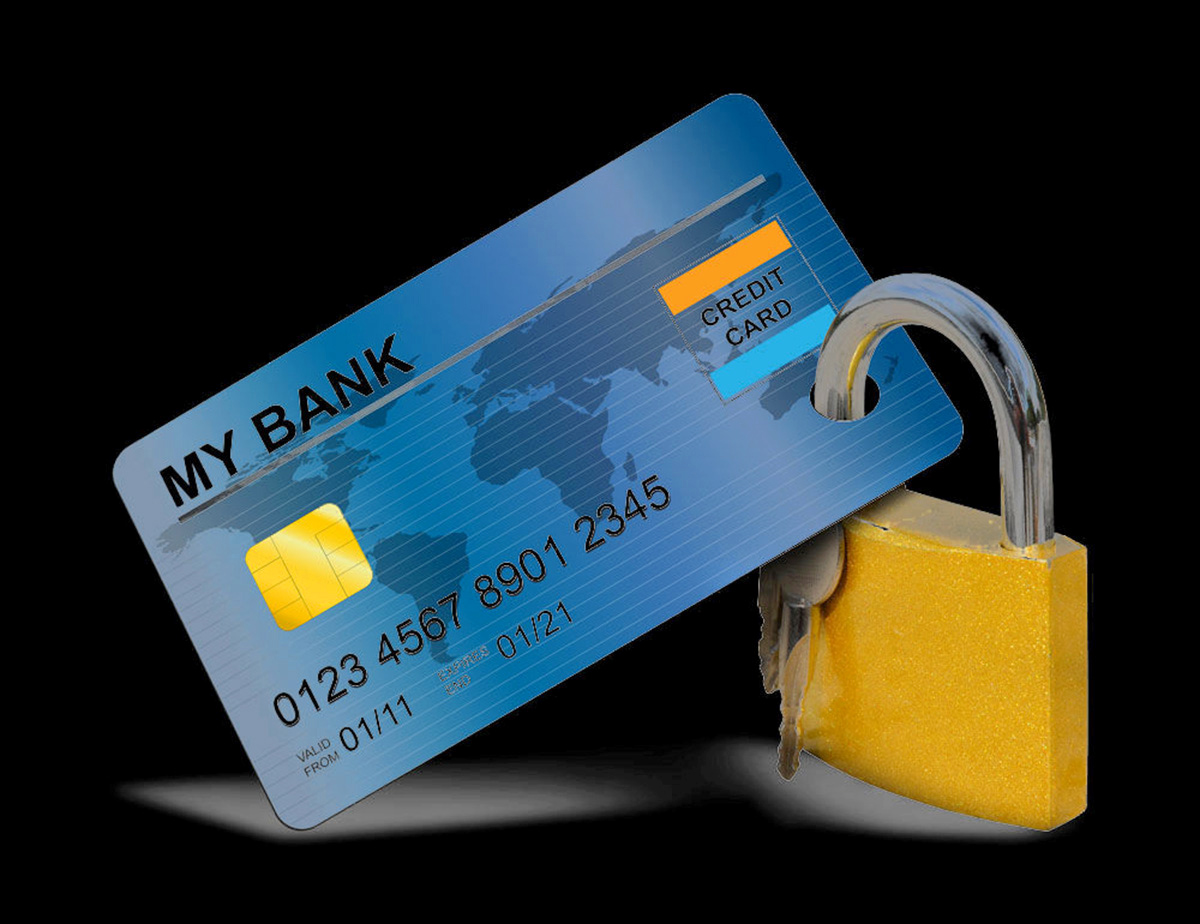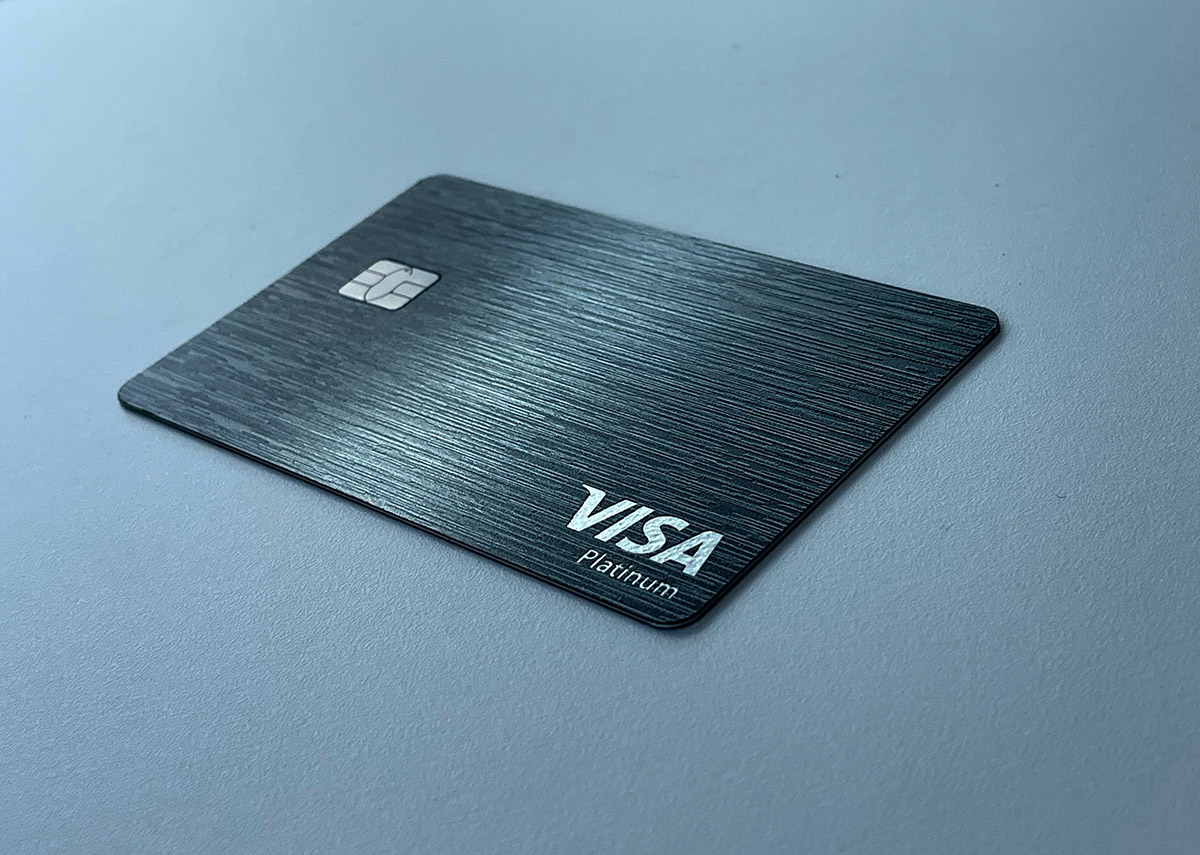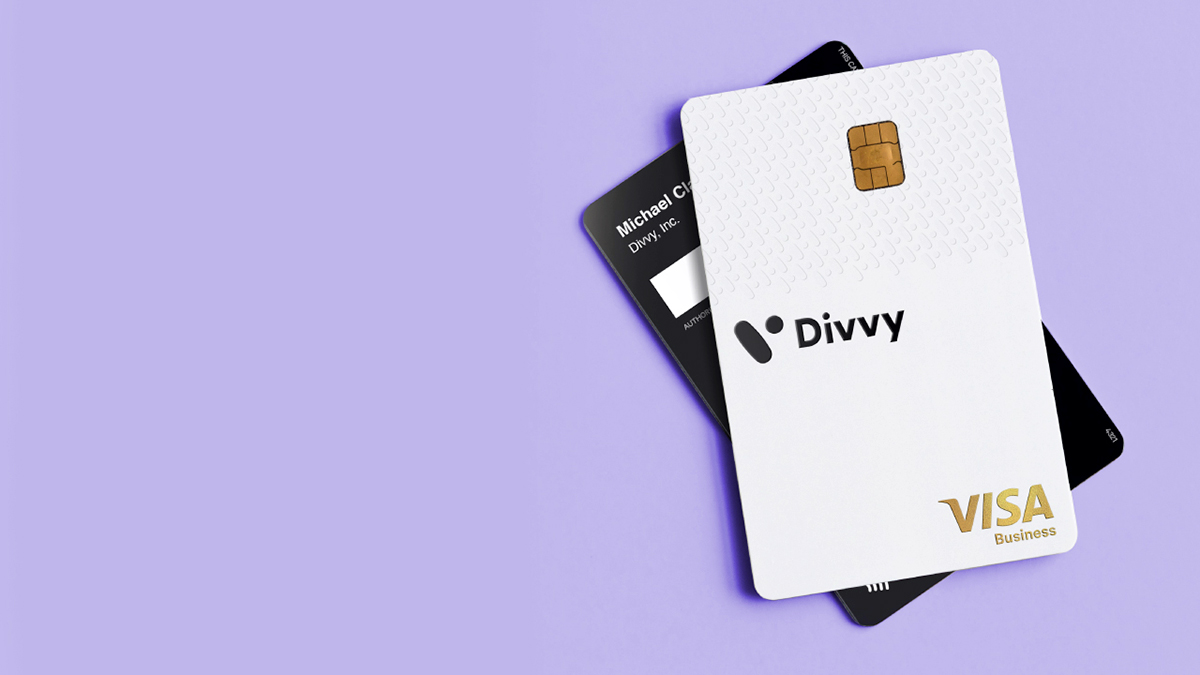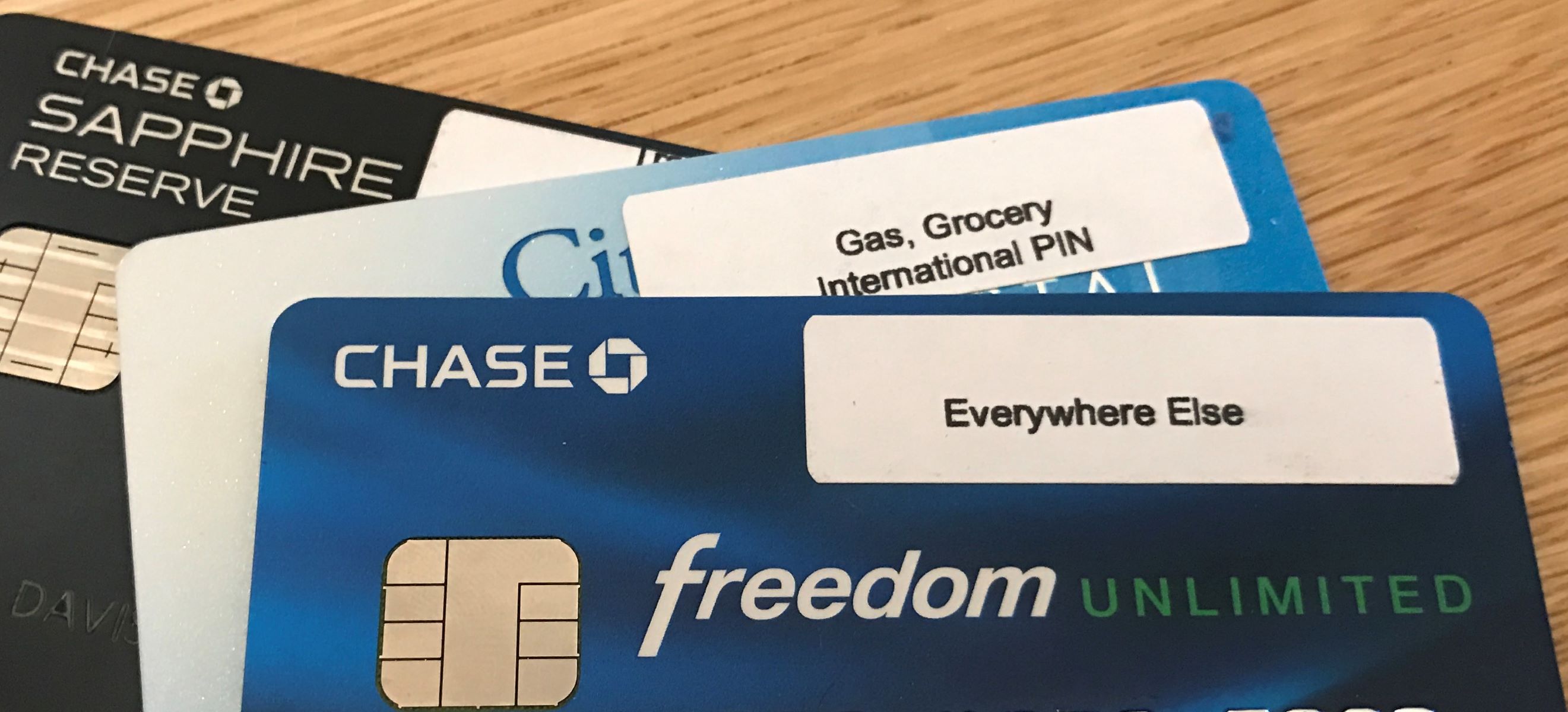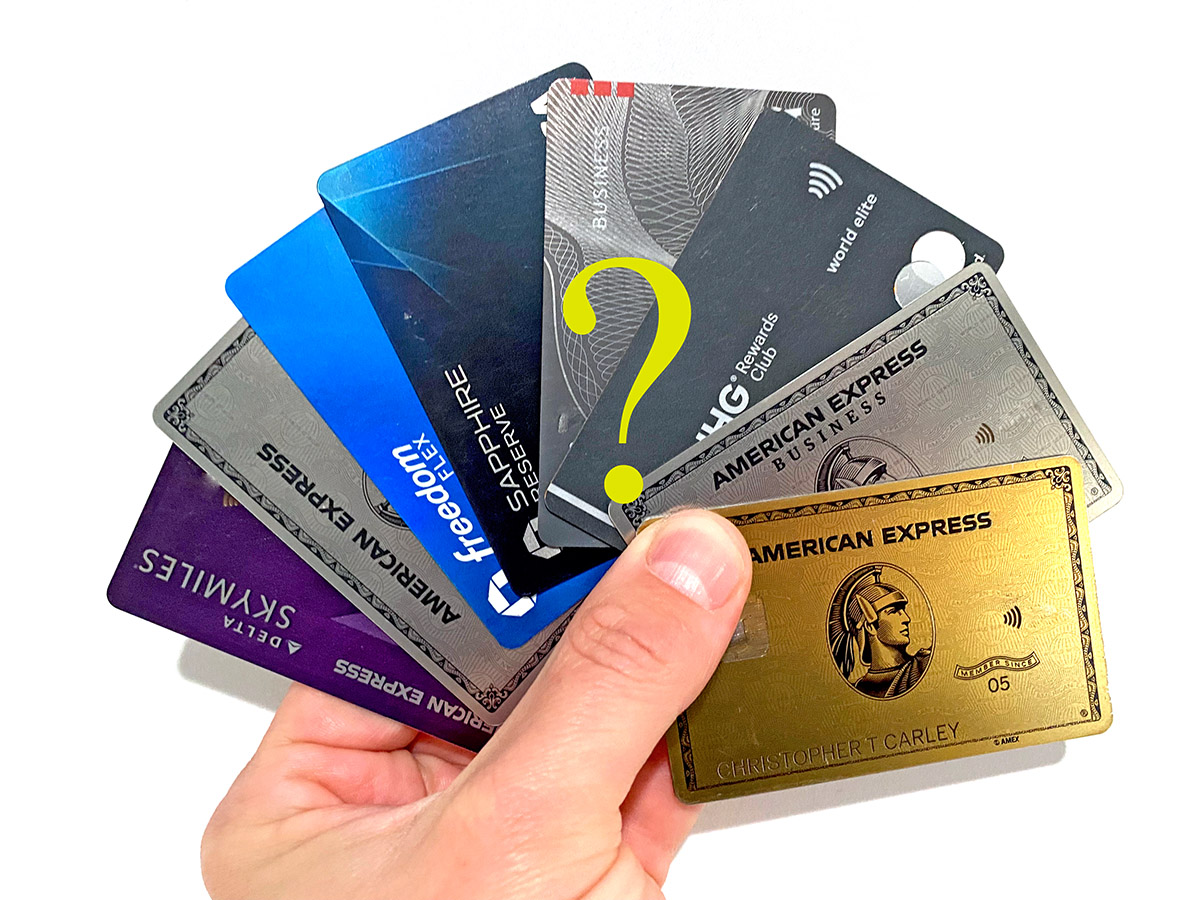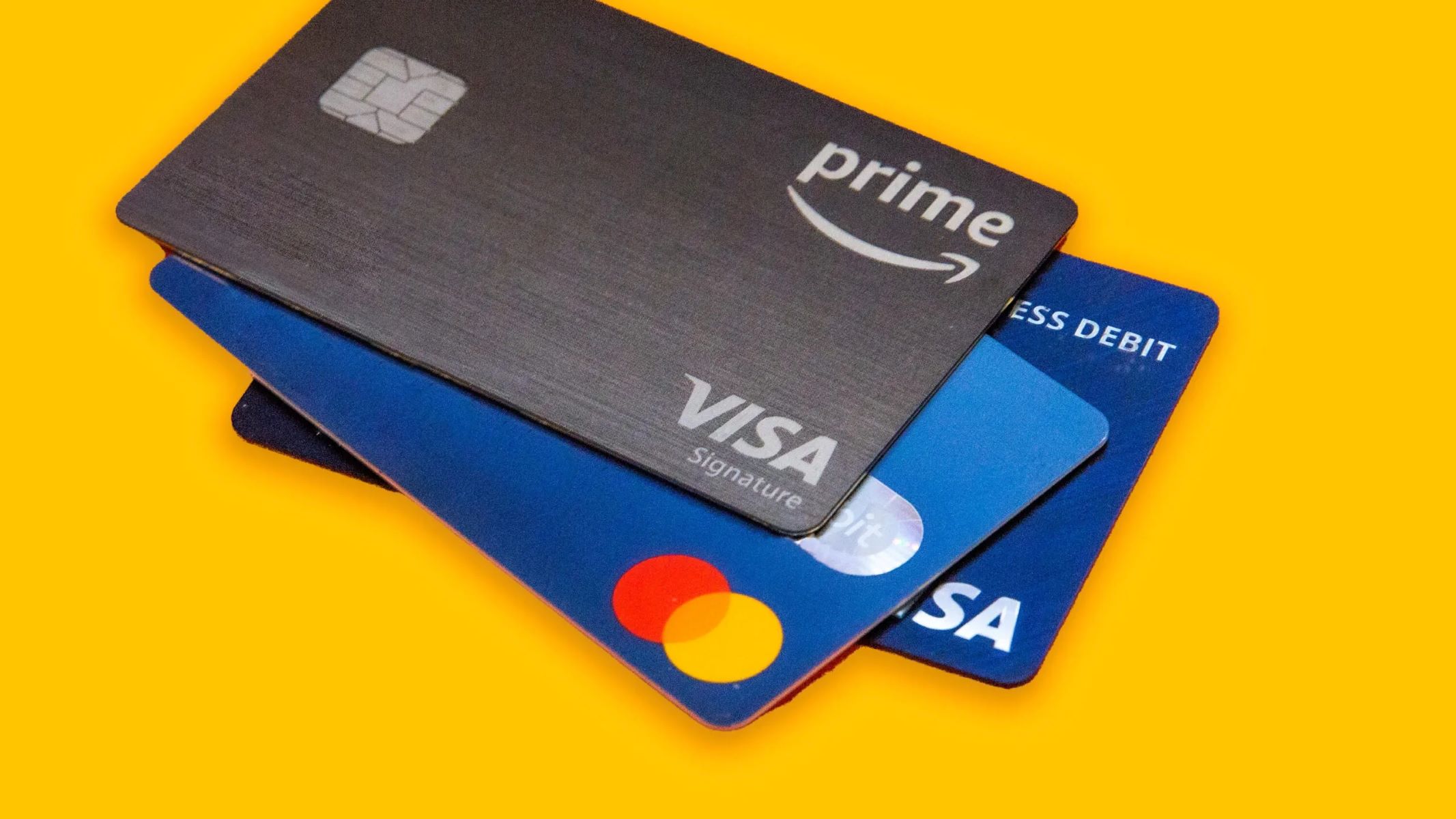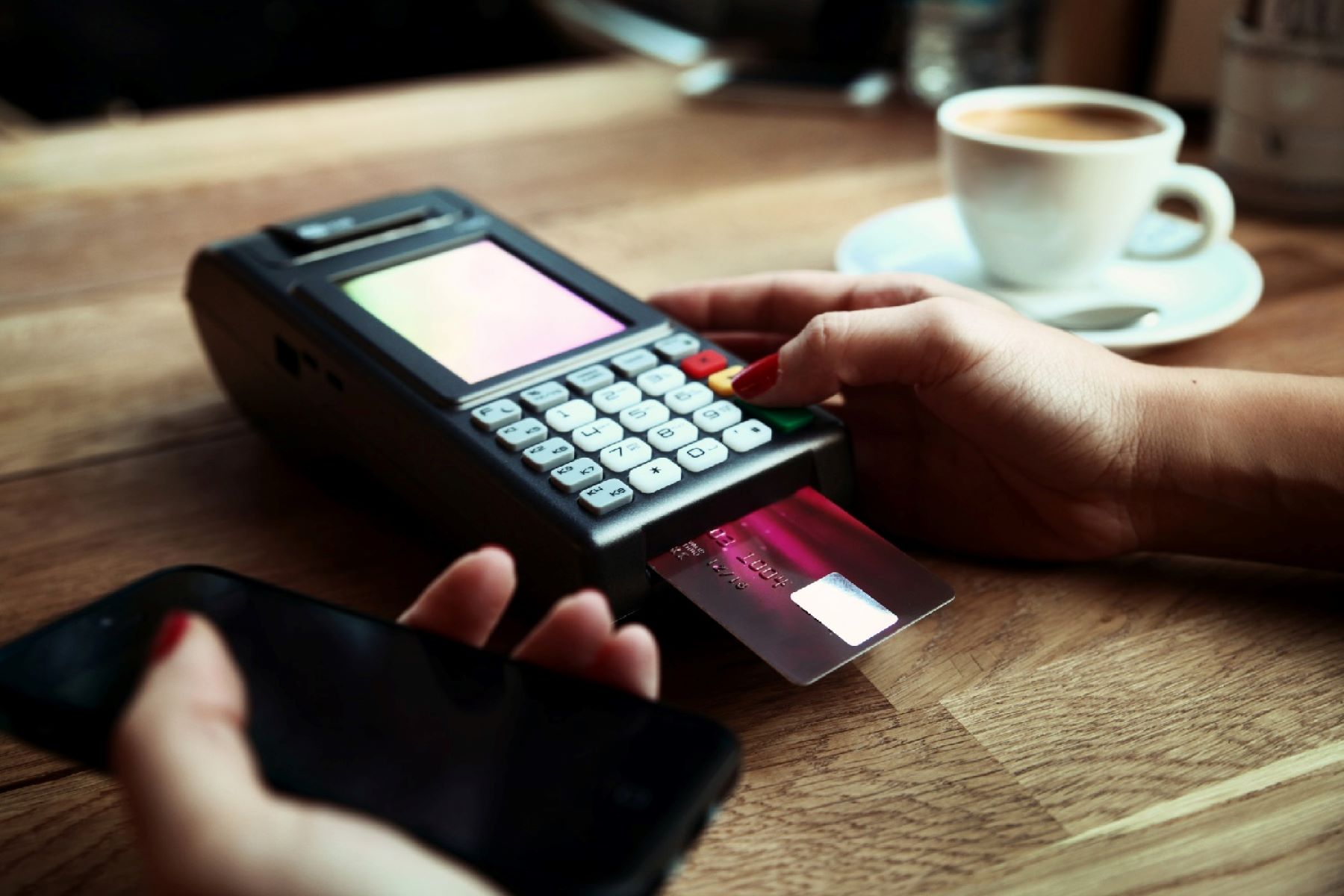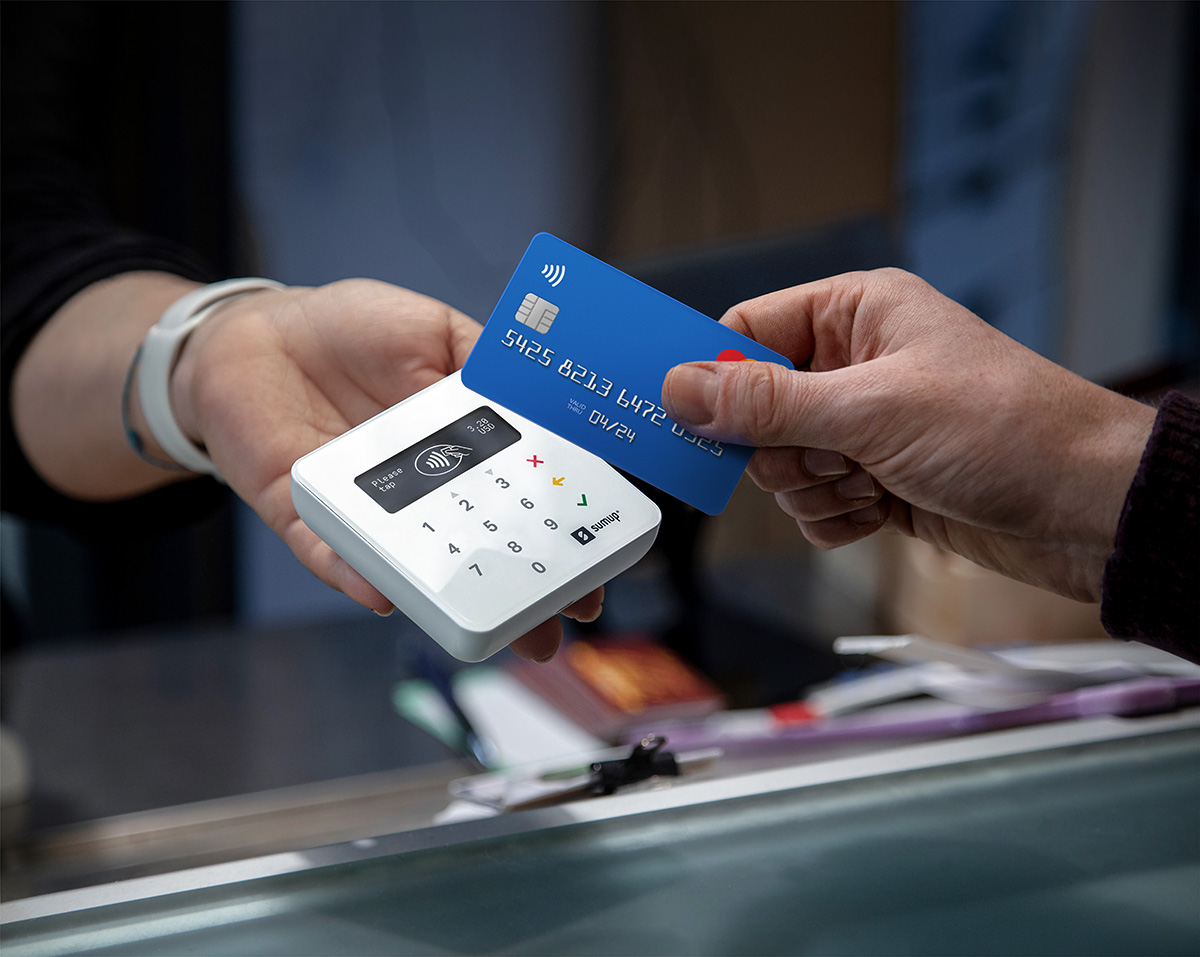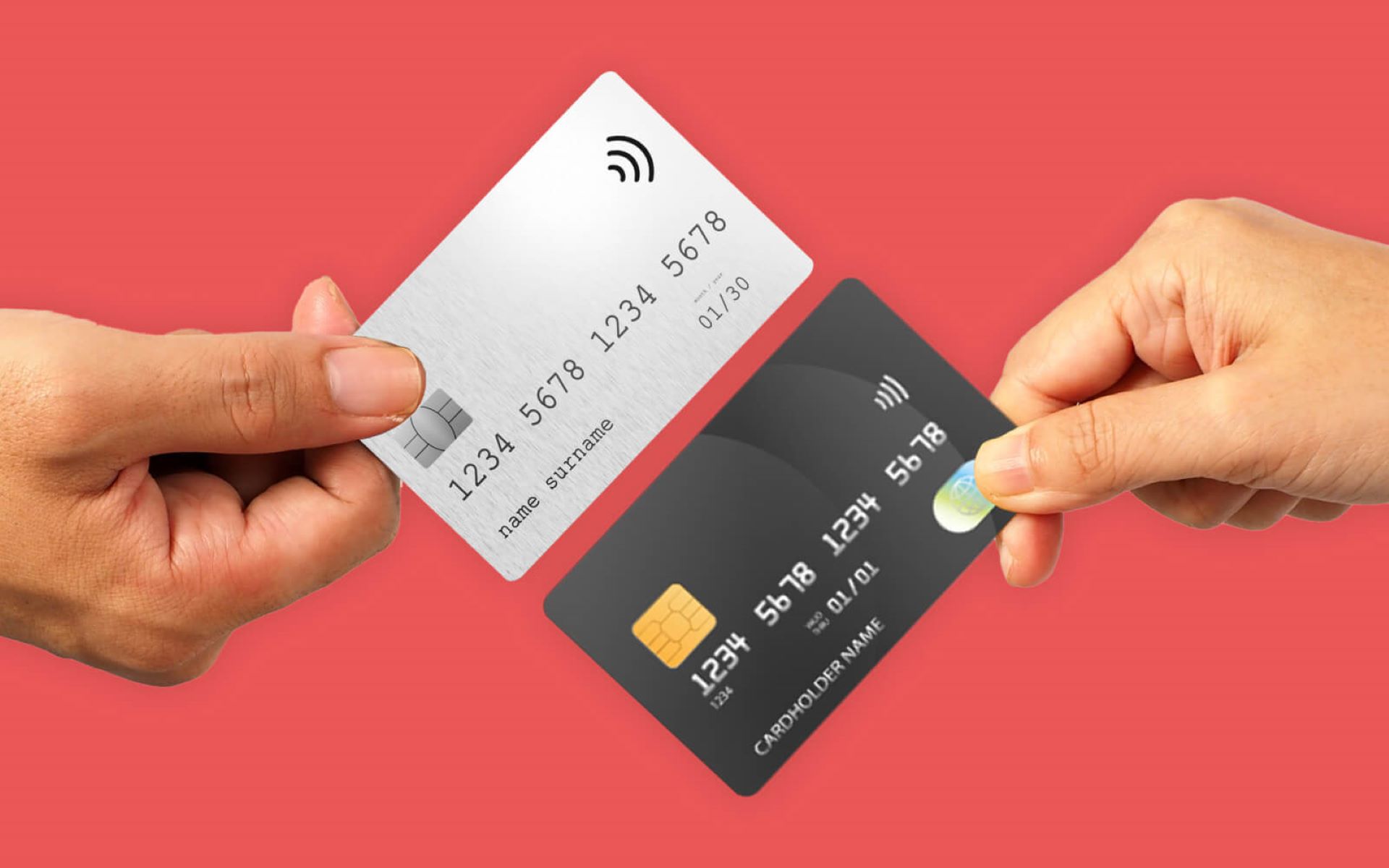

Finance
What Is A Rfid Credit Card
Published: October 24, 2023
Learn about RFID credit cards in finance and how they can protect your personal information. Stay informed and secure with the latest in credit card technology.
(Many of the links in this article redirect to a specific reviewed product. Your purchase of these products through affiliate links helps to generate commission for LiveWell, at no extra cost. Learn more)
Table of Contents
Introduction
Welcome to the world of finance, where technology continues to revolutionize the way we handle transactions. From online banking to mobile payments, the digital era has transformed the way we manage our money. One innovation that is gaining widespread attention is the RFID credit card.
RFID, which stands for Radio Frequency Identification, is a technology that uses radio waves to transmit data wirelessly. It has been used for decades in various industries, including retail, transportation, and healthcare. Now, RFID technology has found its way into credit cards.
In this article, we will explore what RFID credit cards are, how they work, and the benefits and risks associated with them. We will also provide tips on how to protect your RFID credit card from unauthorized scanning.
If you’re a tech-savvy individual looking for an easy and convenient way to make payments, or if you’re simply curious about the latest advancements in financial technology, read on to learn more about RFID credit cards.
What is RFID?
RFID, which stands for Radio Frequency Identification, is a technology that uses radio waves to wirelessly transmit data between electronic devices. It consists of two main components: an RFID reader and an RFID tag. The reader emits radio waves, which are received by the tag. The tag then responds by transmitting its unique identifier back to the reader.
The use of RFID technology has become increasingly common in various industries. For example, it is used in inventory management systems to track and locate products in warehouses. It is also used in access control systems to grant entry to authorized individuals in secure areas.
RFID technology offers several advantages over traditional barcode scanning. With RFID, scanning can be done remotely and without direct line-of-sight, making it faster and more convenient. Additionally, RFID tags can store more information than barcodes, allowing for more detailed tracking and identification.
RFID technology has found its way into various applications, including public transportation cards, toll collection systems, and even passports. One of the latest adaptations of RFID technology is in credit cards.
RFID credit cards, also known as contactless credit cards, utilize RFID technology to enable convenient and quick payments. Instead of swiping the card or inserting it into a reader, users can simply tap their card on a contactless payment terminal to initiate a transaction.
This technology has gained popularity due to its speed and ease of use. It has become especially prevalent in countries like the United States, Europe, and Australia where contactless payment infrastructure is widely available.
What are RFID credit cards?
RFID credit cards, also known as contactless credit cards, are a type of payment card that uses RFID technology to enable quick and convenient transactions. These cards are embedded with a small RFID chip and antenna, allowing them to communicate wirelessly with contactless payment terminals.
Unlike traditional credit cards that require swiping or inserting into a reader, RFID credit cards can be used by simply tapping or waving them near the contactless payment terminal. This contactless method of payment reduces the need for physical contact, making transactions faster and more convenient.
RFID credit cards typically have a logo or symbol on them to indicate that they are equipped with contactless technology. The most common logos you may see on RFID credit cards are PayPass (Mastercard), PayWave (Visa), and ExpressPay (American Express).
These cards are widely accepted at payment terminals that display the contactless payment logo. As contactless technology becomes more prevalent, more merchants are adopting it as a preferred payment method, making RFID credit cards increasingly convenient for everyday purchases.
It is important to note that RFID credit cards can still be used in traditional payment terminals that require insertion or swiping. The presence of RFID technology does not hinder the card’s compatibility with existing payment infrastructure.
It’s worth mentioning that RFID credit cards are not limited to just credit cards. Debit cards, prepaid cards, and even some mobile payment solutions utilize RFID technology to enable contactless payments, offering users a range of options in managing their finances.
With the advent of RFID credit cards, consumers no longer have to carry around bulky wallets filled with cash or fumble with loose change. The ease and convenience of these cards have made them increasingly popular, transforming the way we make payments in today’s fast-paced world.
How do RFID credit cards work?
RFID credit cards use Radio Frequency Identification (RFID) technology to facilitate quick and convenient payments. These cards are embedded with a small RFID chip and an antenna, allowing them to communicate wirelessly with contactless payment terminals.
When you tap or wave your RFID credit card near the contactless payment terminal, three main steps occur:
1. Power-Up: The contactless payment terminal emits a radio wave signal, which powers up the RFID chip in the credit card. This is known as energizing the card.
2. Data Exchange: Once the RFID chip is powered up, it communicates with the payment terminal by sending the necessary payment information. This typically includes the credit card number, expiry date, and a unique transaction code.
3. Transaction Verification: The payment terminal receives the data from the credit card and verifies its authenticity. It checks if the card is valid, if there are sufficient funds, and if any additional security measures, such as a PIN or biometric authentication, are required.
If the verification is successful, the payment is authorized, and the transaction is completed. The entire process takes just a few seconds, allowing for seamless and efficient payment experiences.
It’s important to note that the RFID chip in an RFID credit card does not store any personal or financial information. Instead, it houses a unique identifier that is linked to your account details stored securely in the card issuer’s system. This ensures that your sensitive information is protected in case your card is lost or stolen.
It’s also worth mentioning that RFID credit cards have a limited range for communication, typically between 1 to 4 inches. This means that the card needs to be in close proximity to the payment terminal for the transaction to occur, providing an added layer of security against accidental or unauthorized scanning.
Overall, RFID credit cards revolutionize the payment process by offering a convenient, secure, and speedy method for making transactions. With the tap of a card, you can complete your purchase and be on your way, making everyday transactions a breeze.
Benefits of RFID credit cards
RFID credit cards offer several advantages that make them an attractive payment option for both consumers and merchants. Here are some of the key benefits of using RFID credit cards:
1. Convenience: One of the primary benefits of RFID credit cards is their convenience. With a simple tap or wave near a contactless payment terminal, you can quickly complete a transaction without the need for swiping or inserting your card. This saves time and provides a hassle-free payment experience, especially for small purchases where the traditional card payment process can feel cumbersome.
2. Speed: RFID credit card transactions are incredibly fast. The wireless communication between the card and the payment terminal allows for instant data exchange, reducing transaction times significantly. This is particularly beneficial in busy retail environments, where quick and efficient payment processing is crucial to maintaining a smooth flow of customers.
3. Security: RFID credit cards are equipped with security features that help protect against fraudulent transactions. The unique identifier stored on the RFID chip, rather than actual account details, ensures that your sensitive information remains safe. Additionally, the limited communication range of RFID technology minimizes the risk of unauthorized scanning or skimming attempts.
4. Versatility: RFID credit cards are compatible with a wide range of contactless payment terminals. They can be used not only at retail stores but also in public transportation, vending machines, and various other locations. This versatility allows for seamless payment experiences across different industries and makes RFID credit cards a convenient payment option wherever contactless payment technology is supported.
5. Contactless Limits: Many countries and card issuers have implemented contactless limits for RFID credit cards. These limits specify the maximum transaction amount that can be made without the need for a PIN or signature. This adds an extra layer of security while still providing a convenient payment method for small and everyday purchases, reducing the need for constant authentication.
By incorporating these benefits, RFID credit cards are transforming the way we make payments, offering a more convenient, efficient, and secure method of conducting transactions in today’s fast-paced world.
Risks and concerns associated with RFID credit cards
While RFID credit cards offer numerous benefits, it’s important to be aware of the potential risks and concerns associated with their use. Here are some key considerations:
1. Unauthorized Scanning: One of the primary concerns with RFID credit cards is the risk of unauthorized scanning or skimming. Since the communication between the card and the payment terminal is wireless, there is a possibility that someone with a specialized skimming device could intercept the card’s information without your knowledge. However, it’s worth noting that the range of RFID communication is limited, typically a few inches, making it more difficult for unauthorized individuals to initiate a successful scan.
2. Data Theft and Privacy: RFID credit cards transmit payment information wirelessly, which could potentially make them vulnerable to data theft. While the unique identifier on the card’s RFID chip does not contain personal or financial information, it is still important to remain vigilant about protecting your card’s data. Additionally, concerns have been raised about the potential tracking of individuals through RFID technology. Although it is unlikely to be a widespread issue, it is still important to be aware of the potential privacy implications.
3. Fraudulent Transactions: While RFID credit cards have security measures in place to protect against fraudulent transactions, it is still possible for unauthorized transactions to occur. This could happen if your card is lost or stolen and someone manages to use it for purchases before you have a chance to report it. It is crucial to monitor your card statements regularly, report any suspicious activity promptly, and contact your card issuer immediately if your card is lost or stolen.
4. Limited Acceptance: Although contactless payment technology is becoming more prevalent, there are still some places where RFID credit cards may not be accepted. Some older payment terminals may not support contactless payments, and certain merchants may not have upgraded their systems to accommodate this technology. It’s always a good idea to carry a backup form of payment, such as a traditional credit card or cash, to ensure you can make payments when contactless options are not available.
5. Contactless Payment Limitations: While contactless payment limits can be seen as a benefit, it’s important to understand that they can limit the amount you can spend without additional authentication. This can be inconvenient if you need to make a larger purchase and have to switch to a different payment method, such as inserting your card or entering a PIN. It’s crucial to be aware of these limits and plan accordingly for larger transactions.
By being mindful of these risks and concerns, you can take steps to protect yourself and ensure a secure and worry-free experience when using RFID credit cards.
How to protect your RFID credit card from unauthorized scanning
While the risk of unauthorized scanning or skimming of RFID credit cards is relatively low, it’s still important to take precautions to protect your card’s information. Here are some steps you can take to safeguard your RFID credit card:
1. Use RFID-blocking sleeves or wallets: Consider using RFID-blocking sleeves or wallets that are designed to prevent the transmission of radio waves. These sleeves are made with metal or a specialized material that creates a Faraday cage around your card, blocking any unwanted signals. Simply insert your RFID credit card into one of these sleeves or use an RFID-blocking wallet to provide an additional layer of protection.
2. Keep your RFID credit card separate from other cards: To minimize the risk of accidental scanning, keep your RFID credit card separate from other cards in your wallet or purse. By doing so, you reduce the likelihood of multiple cards being simultaneously read by a payment terminal or skimming device.
3. Be cautious of your surroundings: When making a payment with your RFID credit card, be mindful of who is around you. Shield your card with your hand or wallet to prevent it from being scanned by someone nearby with malicious intent. In crowded areas, be vigilant and aware of any suspicious activity that could indicate someone attempting to scan cards without permission.
4. Regularly monitor your card statements: Regularly review your credit card statements to ensure all transactions are legitimate. If you notice any unauthorized or suspicious activity, contact your card issuer immediately. Most credit card companies have robust fraud protection measures in place and will investigate any fraudulent charges on your behalf.
5. Keep your card issuer’s contact information handy: In case your RFID credit card is lost or stolen, it’s important to have your card issuer’s contact information readily available. This way, you can report the loss or theft promptly, and they can take the necessary steps to protect your account and issue you a new card.
6. Consider turning off the RFID feature: If you rarely use the contactless payment feature of your RFID credit card or have concerns about security, you may have the option to disable the RFID functionality. Check with your card issuer to see if this option is available, and if so, weigh the convenience of contactless payments against the risk of unauthorized scanning.
By following these precautions, you can reduce the risk of unauthorized scanning and help ensure the security of your RFID credit card.
Conclusion
RFID credit cards have revolutionized the way we make payments, providing us with a convenient, efficient, and secure method of conducting transactions. With a simple tap or wave, these contactless cards allow for quick and hassle-free payments, saving us time and streamlining our everyday purchases.
However, it’s important to be aware of the risks and concerns associated with RFID credit cards. While the risk of unauthorized scanning or skimming is relatively low, it is still crucial to take precautions to protect your card’s information. Using RFID-blocking sleeves or wallets, keeping your card separate from other cards, and being cautious of your surroundings can help minimize the risk of unauthorized scanning.
Furthermore, regularly monitoring your card statements, keeping your card issuer’s contact information handy, and considering disabling the RFID feature if necessary are additional steps you can take to ensure the security of your RFID credit card.
Overall, RFID credit cards offer numerous benefits, including convenience, speed, security, versatility, and contactless payment limits. Their widespread acceptance and compatibility with various contactless payment terminals make them an increasingly popular payment method in today’s digital age.
As technology continues to advance, it’s important to stay informed and adapt to changes in the financial landscape. By understanding how RFID credit cards work, their benefits, risks, and how to protect yourself, you can confidently embrace the convenience of contactless payments while maintaining the security of your personal and financial information.
Remember, with proper precautions and awareness, RFID credit cards can be a valuable tool in simplifying and enhancing your financial transactions.
